Indian Creek, Rowena and Ballinger: Discovering history gems in small West Texas towns
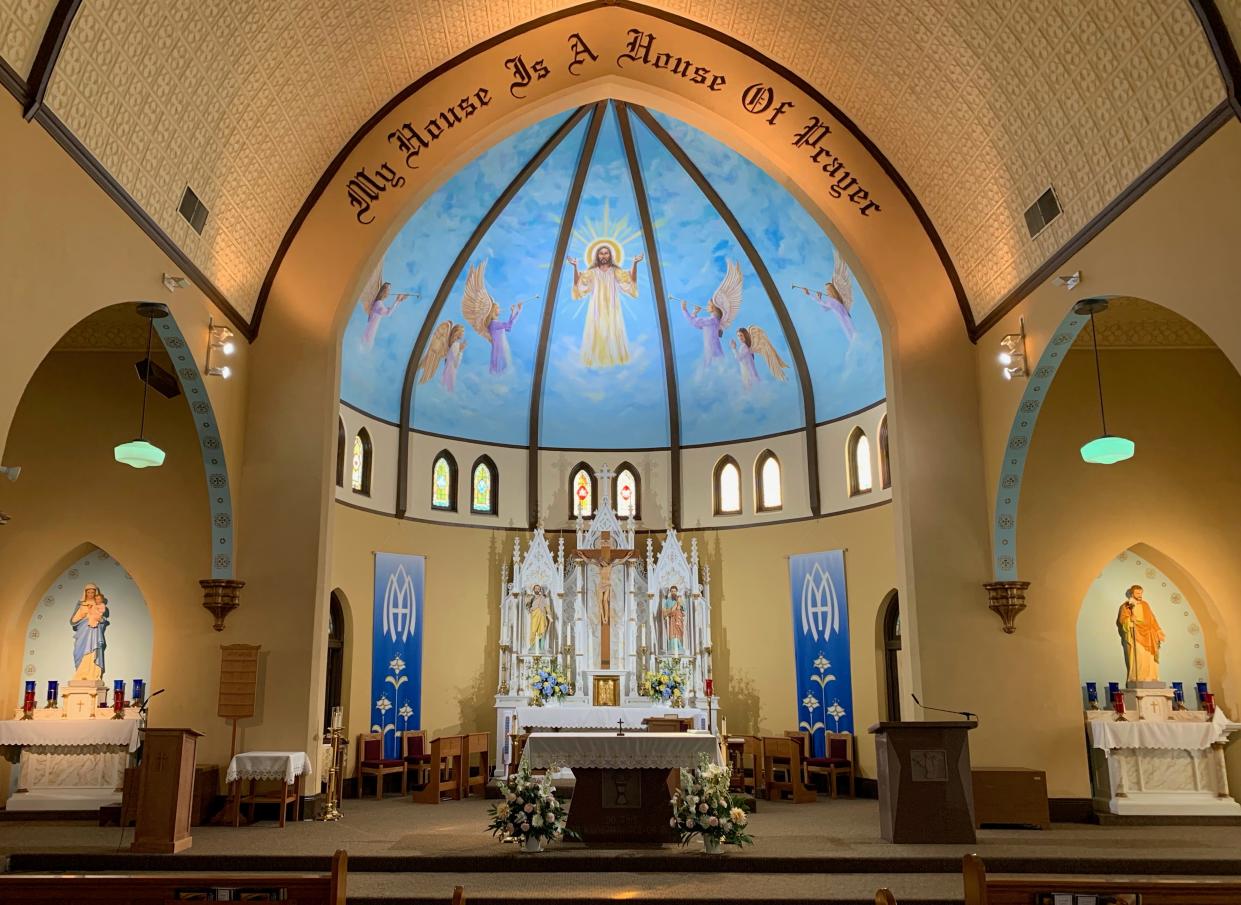
- Oops!Something went wrong.Please try again later.
INDIAN CREEK — If you spot it in time, stop on a dime.
That's been a road-trip rule for decades now, at least among my travel buddies who share an interest in the people, places, culture and history of Texas.
Motoring alongside the flat cotton fields on U.S. 67 from San Angelo to Brownwood on a recent West Texas road trip, we spotted in the distance a tall, dark church spire.
It looked out of place. More like something you'd see in parts of Europe, maybe, not West Texas.
A convenient right turn allowed us to safely check it out.
The spire belonged to St. Joseph Catholic Church in Rowena, a town of fewer than 500 souls in southern Runnels County. Built of sturdy brick dressed with limestone and graced with stained-glass Gothic windows, it could not have been more inviting.
Clearly, Sunday mass was done, but three women lingered outside.
"Which community built this church?" I asked, knowing that we were deep into traditionally Baptist and Methodist territory. This outcropping of Catholicism had to come with a story.
Two of the women said: "Ask Pat. She'll know."
Pat was Patricia Vancil. "Czech?" I asked. She quickly corrected me: "German."
More: Texas history: A house of pulp fiction at the Robert E. Howard Museum
Rowena was settled, she said, mainly by dry-farming German Texans who drifted west from Central Texas.
Vancil invited my travel buddy and me to see the inside of this jewel of a church, which replaced the original 1907 structure in 1924. It was painstakingly renovated between 2012 and 2016, including a mural of angels in the apse that looked like they stepped off the streets of a place like Rowena.
Indeed, the artist's grandnieces and grandnephews served as models.
The ornate altar is original.
Vancil told me that, during the terrible drought of the 1950s, St. Joseph became an anchor for the whole surrounding area. Recently, however, its centrality was diminished. Its Catholic high school closed in 1975 and its elementary school in 1981. Despite those losses, both school buildings to the south of the sacristy look spit-spot.
Now a little over 200 families — mostly of German, Czech or Mexican origins — attend the church.
One fascinating tidbit from St. Joseph's history relates to shifts of hierarchical power. Within living memory, the church has been overseen, in turns, by the Archdiocese of San Antonio, the Diocese of Amarillo, and the Diocese of San Angelo.
That tells you something about Rowena's location in the open spaces of West Texas, but also about the incremental spread of Catholicism in Texas, and thus the need for new dioceses — San Antonio's modern diocesan power dates back to 1874, Amarillo's to 1926, and San Angelo's to 1961.
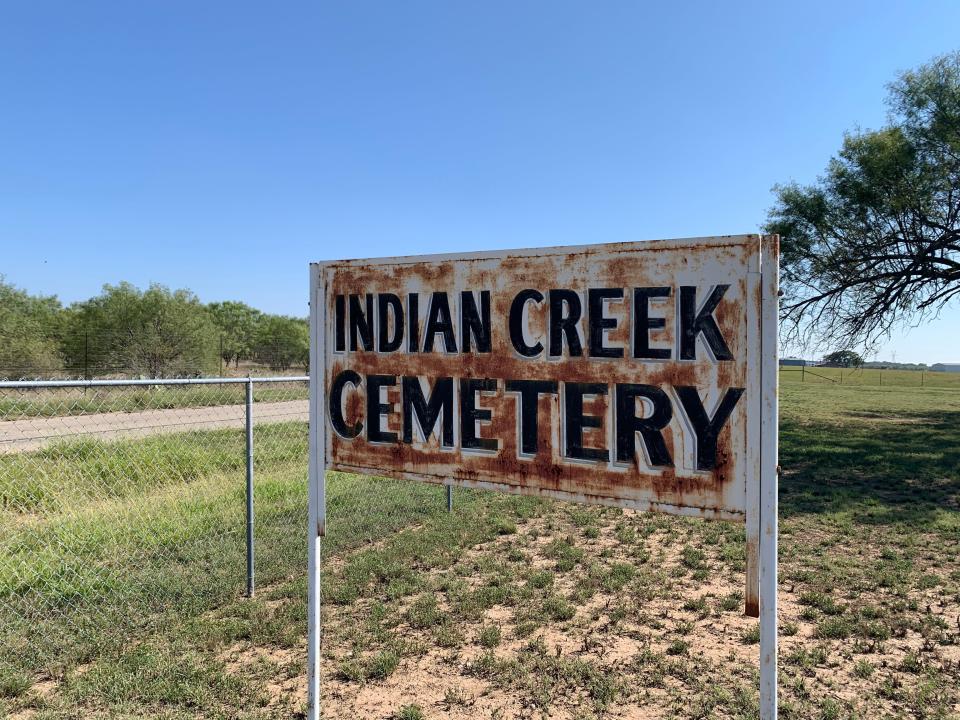
Looking for an author in Indian Creek
Indian Creek rises from fertile land about 15 miles south of Brownwood in Brown County. Barely a hamlet these days, it is mostly known for two things — as the birthplaces of Howard Payne University, now in Brownwood, and of Texas author and activist Katherine Anne Porter, whose remains lie in the Indian Creek Cemetery.
Living in Central Texas, I had long associated Porter (1890-1980) with Kyle in Hays County, where she moved with her family at age 2, after her mother died. There you will find the Katherine Anne Porter Literary Center, situated in a house built by her paternal grandfather. Porter lived there for 10 years. Her later published memories of Kyle are not always kind to what was then a small Texas town, now a bustling suburb.
Texas history, delivered to your inbox
Click to sign up for Think, Texas, a newsletter delivered every Tuesday
A journalist, essayist and short story writer, Porter made her living by the pen all over the country and in Mexico. She is remembered by the public for her one big novel, "Ship of Fools," which took decades to write, then turned into a bestseller, and was sold to Hollywood for what would be the equivalent of millions of dollars in today's currency.
I respect "Ship of Fools" for its rich characterizations, if not its strained geopolitical analogies. Yet I idolize her short stories and, especially, her novella, "Pale Horse, Pale Rider," set during the Spanish flu epidemic of 1918-1919. (I'm fond of the Library of America edition in "Collected Stories and Other Writings.")
After rereading it not long ago, I considered Porter's talents on a plane with William Faulkner, Ernest Hemingway and F. Scott Fitzgerald.
These days, Porter is still admired by many Texas writers, including Stephen Harrigan ("The Gates of the Alamo," "Big Wonderful Thing"). Prior to my trip, he reminded me via social media that Porter's ashes are buried at the Indian Creek Cemetery.
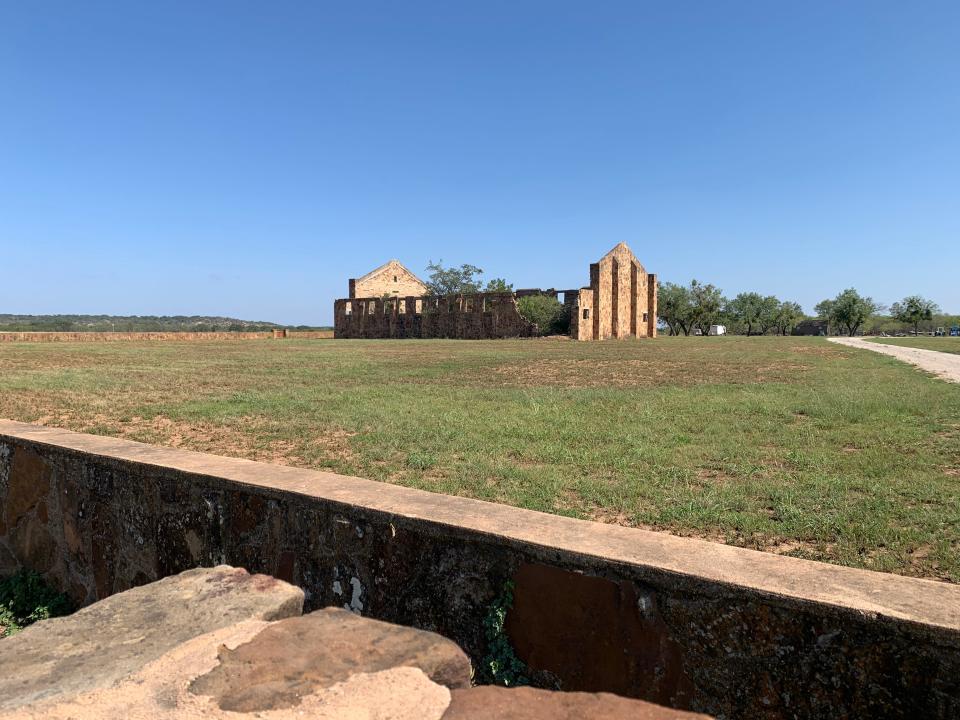
First, to find it.
The current settlement of Indian Creek is strung along several county roads without much in the way of signs. We found the well-kept ruins of what appears to have been a school — the original Howard Payne? — but no Indian Creek Cemetery there. Digital and printed maps marked spots for several tiny nearby graveyards, all on private land. One published source put the location for the cemetery we sought on a nearby U.S. highway, without helpful directions.
We searched and searched.
We gave up and sped north up County Road 237 toward Brownwood and dinner.
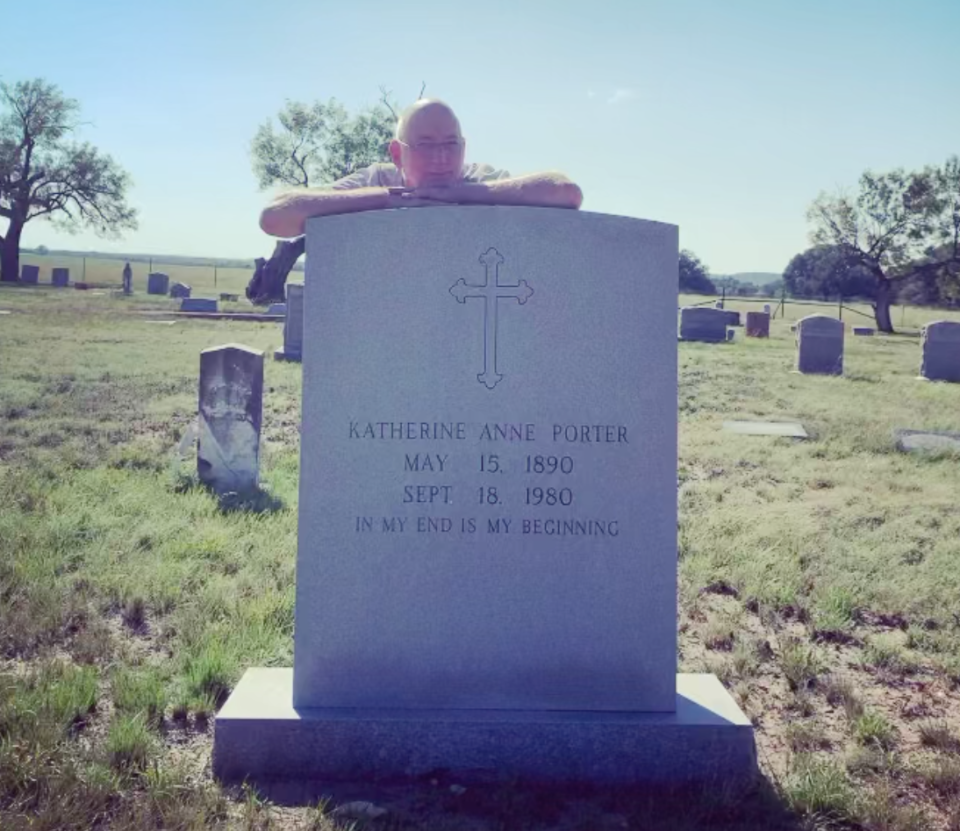
"There it is!" shouted my travel buddy, pointing to a tidy cemetery in a broad field behind an open gate and a rusty sign. A few minutes later, we had found the gravestone adorned with the simple words: "My end is my beginning."
Turns out, upon further reading, that the town of Indian Creek had at one point moved three miles from its original location. No wonder we were confused. We need a good wayfaring app.
An unusual Ballinger statue and a mess of mysteries
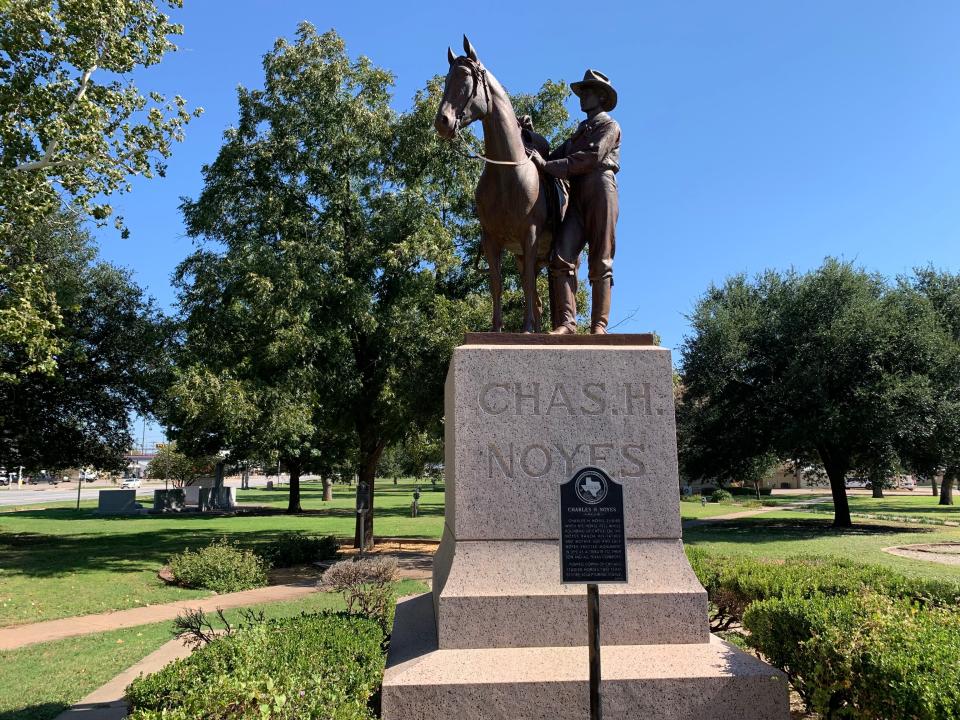
Several "Think, Texas" readers had advised us, prior to this road trip, to stop in Ballinger to see Pompeo Coppini's unusual equestrian statue in the Runnels County courthouse square.
We found it at the far south end of this spacious, rectilinear square. As we circled it, several mysteries presented themselves: Why was the young man not on his horse? Why was he looking into the distance? What was the story about the rancher who paid for the bronze memorial to his son, killed in a riding accident?
Readers had brought the tribute to horseman Charles Noyes to my attention because Austin-based author Harrigan had taken it as one inspiration for his historical novel, "Remember Ben Clayton." I had recently purchased a copy of the book in Glen Rose, so I put it at the top of my Texas stack of books.
It is, of course, a creative work of fiction, but we are introduced to a Coppini-like sculptor, as well as a rancher heartbroken by his son's death, along with other people and places familiar to Texans, such as a folklorist a lot like J. Frank Dobie, a scene of violence not unlike the Sherman Courthouse Riot, legendary characters and events taken from our Native American past, and settings in San Antonio and rural Shackelford County that evoke real places in a way that Harrigan seems to do with effortless ease.
The first hundred pages are more loosely structured than some Harrigan works, but he foreshadows the solutions to personal mysteries on almost every page. Halfway through the novel, the discoveries unspool more quickly, and by the last 100 pages, the reader can hardly wait to find out the next emotionally freighted epiphany.
More: Texas history: Forts evoke a rough and isolated, but well-ordered, frontier life
I don't know a historical precedent for Maureen, the ambitious sculptor's adult daughter, also a sculptor, but she is the finest portrait of the novel, which includes scenes during and after World War I on the battlefields of France. She did remind me of the evolving women of a century ago penned by Edith Wharton, Henry James and Sinclair Lewis.
The town of Ballinger can thank Harrigan, because now I must return and study the Noyes sculpture more closely, and thereby the rest of the town banked up against a high hill. In fact, I shall look more carefully at Coppini's art in Austin, Corpus Christi and San Antonio as well.
Michael Barnes writes about the people, places, culture and history of Austin and Texas. He can be reached at mbarnes@statesman.com.
This article originally appeared on Austin American-Statesman: Indian Creek, Rowena and Ballinger: History gems in small Texas towns

